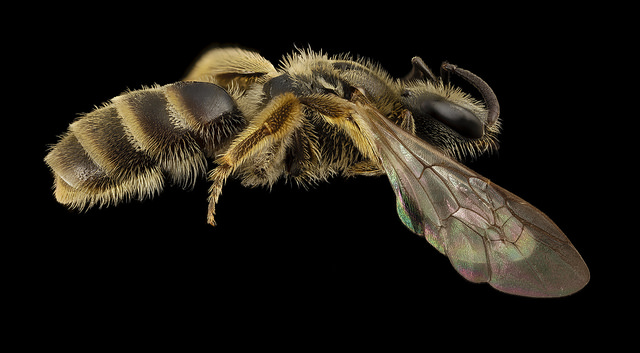Lasioglossum albipes
| Resource Type | Organism |
|---|---|
| Genus | Lasioglossum |
| Species | albipes |
| Common Name | White-footed sweat bee |
| Description | The white-footed sweat bee, Lasioglossum albipes, is a halictid bee (Hymenoptera: Halictidae) that can be found throughout the Palearctic. Females construct their nests in the ground; they collect pollen from a variety of flowers and mass provision their young by building a pollen ball upon which they deposit a single egg (Michener 1974). L. albipes is socially polymorphic, which means that females of this species are cabable of producing either solitary or eusocial nests (Plateaux-Quenu 1993). This species is eusocial in western France but solitary in eastern France and Germany where climates are cooler and nests are initiated later in the year (Plateaux-Quenu 2000). The life cycle of the social females is typical for a primitively eusocial species. Females found a nest in the spring and first rear a brood composed almost entirely of female workers. These workers subsequently help to rear a second brood of reproductive males and females that mate in the fall and diapause as adults throughout the winter. The life cycle of the solitary populations is the same except that they do omit production of a worker brood, but instead produce a single, reproductive brood. Common garden experiments with both social forms reared in the same conditions and under reciprocal photoperiods in the laboratory did not find any evidence of behavioral plasticity among populations, indicating that the behavioral polymorphism within this species has a genetic underpinning. References Plateaux-Quenu C: Flexibilite sociale chez Evylaeus albipes (F.) (Hymenoptera, Halictinae). Actes Coll Ins Soc 1993, 8:127–134. Plateaux-Quenu C, Plateaux L, Packer L: Population-typical behaviours are retained when eusocial and non-eusocial forms of Evylaeus albipes (F.) (Hymenoptera, Halictidae) are reared simultaneously in the laboratory. Insect Soc 2000, 47:263–270. |
| Publication | Kocher SD, Li C, Yang W, Tan H, Yi SV, Yang X, Hoekstra HE, Zhang G, Pierce NE, Yu DW. The draft genome of a socially polymorphic halictid bee, Lasioglossum albipes.. Genome biology. 2013 Dec 20; 14(12):R142. |
| Organism Image |  |
| Image Credit | Sam Droege, USGS. Public domain. View Source. |
 An official website of the United States government.
An official website of the United States government.
